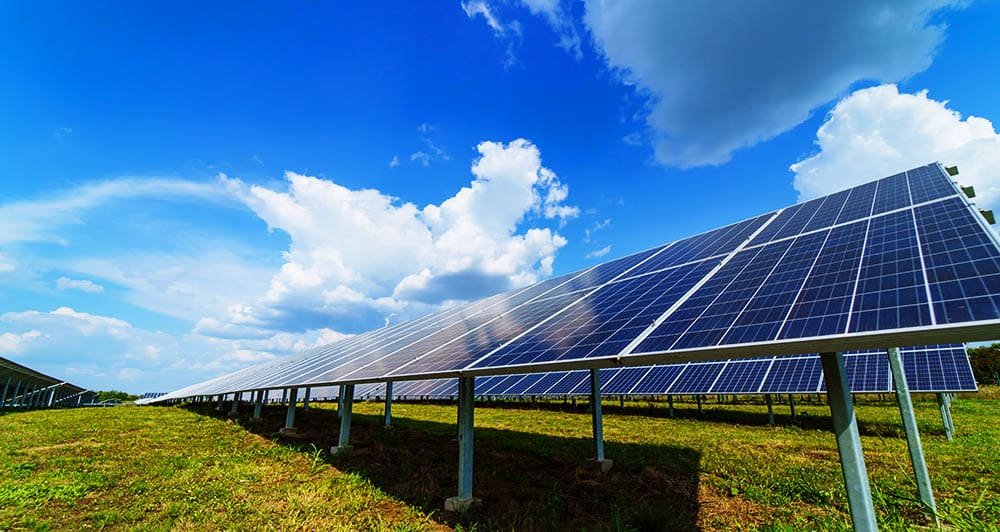Solar energy has emerged as one of the most promising sources of sustainable energy in recent years. With the incredible advancements in technology of solar cells and panels, more and more people are making the switch to this renewable and clean energy source. While some may be motivated by a desire to preserve the environment, others are more drawn to the financial advantages of solar energy.
In this article, we will explore the benefits of solar energy and dive into how making the switch to solar can benefit both your wallet and the environment.
The Benefits of Solar Energy
There are countless reasons why solar energy is a game-changer for the environment and our wallets. Here are a few of the key benefits:
1. Renewable Energy Source
One of the most significant benefits of solar energy is that it is a renewable energy source. Unlike fossil fuels, which are finite resources that will eventually run out, the sun will continue to shine for billions of years. This means that solar energy is a virtually inexhaustible source of power for us to tap into.
2. Clean Energy
Another benefit of solar energy is that it is a completely clean source of energy. Unlike fossil fuels, solar energy produces no harmful emissions, such as carbon dioxide, that contribute to climate change. In fact, replacing just one year’s worth of electricity from non-renewable sources with solar power can equate to reducing carbon emissions by over two million pounds. By switching to solar energy, we can help reduce our carbon footprint and combat the effects of climate change.
3. Energy Independence
Another advantage of solar energy is that it allows us to become more energy-independent. When we rely on traditional sources of energy, such as coal or natural gas, we are at the mercy of fluctuating prices and supply chains that can be disrupted by geopolitical events. By harnessing the power of the sun, we can generate our own electricity and become less reliant on centralized power grids.
4. Financial Savings
One of the most compelling benefits of solar energy is the financial savings it can deliver. While the upfront cost of installing solar panels may be significant, over the long term, it can save homeowners and businesses tens of thousands of dollars on their energy bills. According to a study by the National Renewable Energy Laboratory, homeowners who install solar panels can save an average of $1,000 per year on their electricity bills. This means that investing in solar energy can lead to significant savings over time.
The Cost of Solar Energy
While there are many benefits of solar energy, one of the most common concerns people have when considering making the switch is the upfront cost. There is no denying that installing solar panels can be an expensive undertaking – the average cost of a solar panel system for a home is around $20,000.
However, it’s essential to remember that this cost is an upfront investment that will pay off over time. In addition, there are many financial incentives and tax credits available to people who install solar panels. For example, the federal government currently offers a tax credit of 26% of the total cost of the solar panel system. Some states also offer additional incentives, such as rebates or tax credits, for those who invest in solar energy.
One of the best ways to determine whether solar energy is a good investment for you is to conduct a cost-benefit analysis. This involves evaluating how much you will spend on solar panels versus how much you will save on energy bills over time. In most cases, the savings will easily outweigh the initial investment.
The Advancements in Solar Technology
As technology continues to advance, so do the capabilities of solar energy. One of the most significant advancements in recent years has been the development of more efficient solar cells and panels. Today, solar panels are up to 20% more efficient than they were just a decade ago. This means that more energy can be generated from the same amount of sunlight, making solar energy an even more viable option.
Another exciting development in solar technology is the emergence of solar shingles. These solar panels are designed to look like traditional roof tiles, providing a more seamless integration of solar energy into homes and buildings. This new technology eliminates the need for bulky solar panels and allows for a more aesthetically pleasing appearance.
How to Get Started with Solar Energy
If you’re interested in making the switch to solar energy, there are a few steps you can take to get started:
1. Assess Your Energy Needs
Before you dive into investing in solar panels, it’s essential to assess your energy needs. Evaluate how much energy your home or business uses on average, and determine what kind of solar panel system would be best suited for your needs.
2. Research Solar Installers
Not all solar panel installers are created equal, so it’s essential to do your research before choosing a contractor. Look for installers who have experience in the industry and can provide you with references from satisfied customers.
3. Evaluate Financial Incentives
Be sure to explore all of the financial incentives and tax credits available to you before making a decision. Research federal, state, and local incentives that could significantly reduce the cost of your solar panel system.
Conclusion
Switching to solar energy is a game-changer for both your wallet and the environment. By harnessing the power of the sun, we can generate clean, renewable energy and become more energy-independent. Although the upfront cost of installing solar panels may seem daunting, over time, it can lead to significant financial savings. As technology continues to advance, the capabilities of solar energy will continue to expand, making it an even more promising option for the future.
